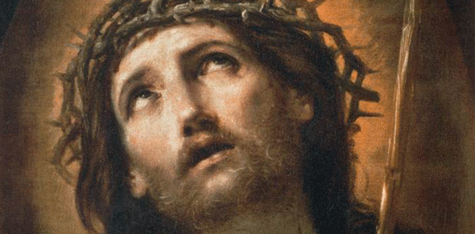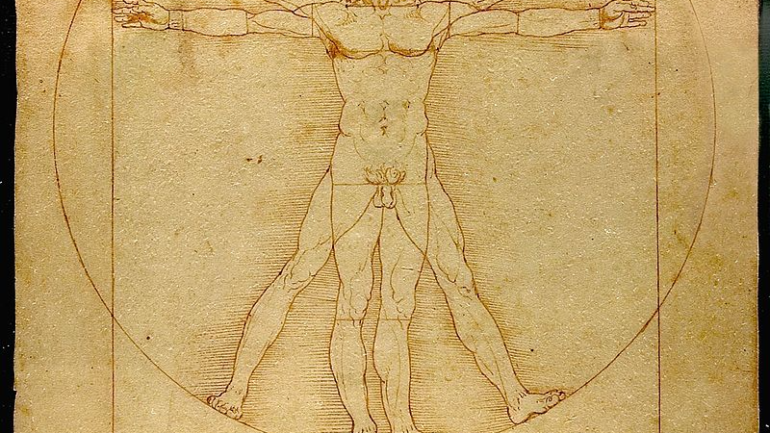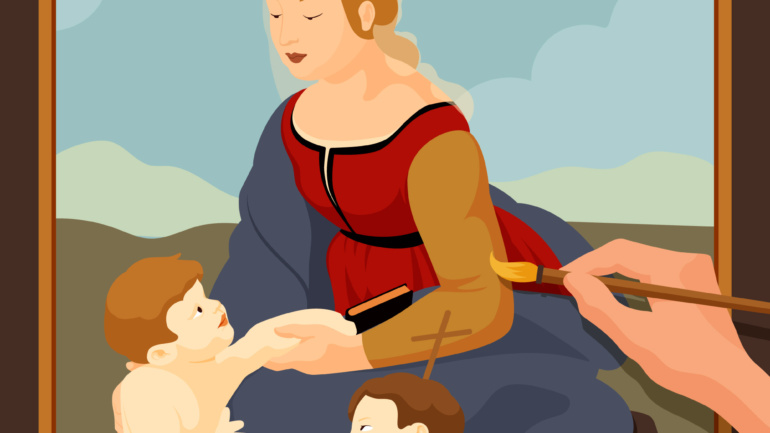Today, I would like to introduce another very important Baroque painter—Guido Reni, who is considered the most significant Italian artist after Carracci and Caravaggio.
“Rafael of the Baroque Period” – Guido Reni
- Reni (1575–1642) was the most important Italian academic painter after Carracci and Caravaggio. He blended the excellent techniques of these two Baroque masters and successfully inherited the artistic achievements of Raphael from the Renaissance period. As a result, he is referred to as the “Raphael of the Baroque Period” and is regarded as the “finisher” of Italian classical art. After him, no other painting masters emerged in Italy. Reni represents the final peak before the decline of Italy’s artistic greatness.
- Reni, whose full name is Guido Reni, was born into a musical family, with both his father and mother being renowned musicians. He was the ninth of many children in the family. He studied at the Bologna Academy of Fine Arts, where he was guided by Lodovico Carracci, the eldest of the Carracci brothers. He later became the director of the Bologna Academy. Although Reni was a painter after Carracci and Caravaggio, his reputation far surpassed that of his predecessors, even being compared to Raphael and considered the “reincarnation” of Raphael.
- A distinctive feature of Reni’s paintings is the “staring at the sky” expression. The figures in his religious and portrait paintings often appear to be gazing upwards, sometimes with an almost rolling-eye expression. The reason for this “Reni-style rolling eyes” is rooted in religion. The figures in his paintings are actually looking towards divinity and God, and this posture symbolizes intense faith. Even Jesus in Reni’s works wears a crown of thorns and gazes at the Heavenly Father, similar to the gestures of pointing to the sky in many of Leonardo da Vinci’s paintings.
- Reni is called the “Raphael of the Baroque Period” because his paintings share many similarities with Raphael’s work, as if the unfinished tasks of the prematurely deceased Raphael were carried out by Reni. For example, in his masterpiece The Martyrdom of Saint Peter, the composition incorporates Raphael’s harmonious triangular structure, reflecting the concept of “perfect painting” that Raphael championed. At the same time, the painting also exhibits Caravaggio’s chiaroscuro technique, Titian’s vibrant colors, and the refined tones of Bronzino’s Mannerism.
- Reni fully inherited the Classical painting style, and his development followed a path very similar to Raphael’s. Reni’s most famous painting is The Goddess of Dawn, which displays strong classical elements. The theme, content, and structure are filled with characteristics from Raphael’s era, inheriting Classical techniques and aesthetic emotions, but with even brighter colors and more intense contrasts. This shows that Reni absorbed the features of both Carracci and Caravaggio, much like how Raphael blended the styles of Leonardo and Michelangelo in his time.
- Reni is the consummate master of Classical painting and its “finisher.” The term “finisher” does not imply failure but rather completion. Raphael proposed the idea of “perfect” painting, and Reni, within a relatively small creative space, further developed this concept. He perfected everything that Classical art could achieve and thoroughly explored the research. Unlike the emotional and open-ended artistic path represented by Michelangelo, Classical art was solved through realism. Even though “hyperrealism” emerged in the 20th century, it was merely a technical advancement, contributing little to painting concepts or artistic ideas. Therefore, the Classical tradition, with realism as its main feature, truly came to an end in Reni’s work.

Guido Reni – Jesus with a Crown of Thorns, Jesus wears a crown of thorns and gazes at the Heavenly Father.

Guido Reni – Saint Cecilia, currently housed at the Norton Simon Museum in California, USA. The figures in Reni’s paintings often appear to be gazing at the sky, sometimes with an almost rolling-eye expression.

Guido Reni – Portraits.

Raphael – The Expulsion of Heliodorus, located in the Heliodorus Room of Raphael’s four rooms in the Sistine Chapel.

Guido Reni – The Goddess of Dawn, currently housed in the Palazzo Pallavicini-Rospigliosi in Rome. The painting showcases strong Classical elements, with themes, content, and structure that are filled with characteristics from Raphael’s period.

Guido Reni – The Martyrdom of Saint Peter, currently housed in the Vatican Museums. The composition incorporates Raphael’s harmonious triangular structure, reflecting the “perfect painting” concept of Raphael.

